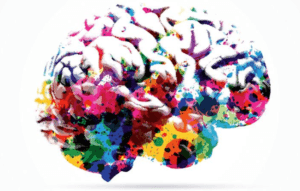Kids Deserve Better Than a ‘One Size Fits All’ Education

By: Beth Johnson
Categories:
If the services and accommodations your child is receiving in school have proven insufficient for them to make progress with the standards, we can help. Has your child been swimming or drowning in an ill-fitting, one-size-fits-all classroom? At a theme park last weekend, we came across a family of tourists of varying shapes and sizes,…
If the services and accommodations your child is receiving in school have proven insufficient for them to make progress with the standards, we can help. Has your child been swimming or drowning in an ill-fitting, one-size-fits-all classroom? At a theme park last weekend, we came across a family of tourists of varying shapes and sizes, each wearing a one-size-fits-all matching T-shirt that, in actuality, fit absolutely no one. It was perfect imagery of the ill-fitting, one-size-fits-all lessons being delivered to a very diverse groups of learners in too many classrooms across our district, state, and country. A one size fits all education is an education designed for the illusory average student. But neuroscience teaches us that learners are as diverse as their fingerprints. Each learner has their own unique set of interests, individual learning styles, personal talents, and specific challenges. Some students have more complexities than others but absolutely no one is truly “average.”

Every student has a jagged learning profile with splintered skills. One student is in the gifted program, an avid reader but lacks organization, and time management skills. Another is a budding scientist with a great depth of knowledge in his specific area of interest but he lacks social prowess and somehow turns every conversation toward his preferred subject. Yet another student, an accomplished musician, has amazing artistic and creative abilities, and can play a complex tune on any of several different instruments after hearing it just once. That same student also has dyslexia which makes traditional reading and thus, almost every assignment designed for the illusory average student, a challenge. And it goes on and on, learners layered in unique gifts and complexities that make up a beautifully diverse tapestry of students. Obviously, a one-size-fits-all educational approach simply won’t do.
Students with disabilities, on average, make up at least 10% of the student body at any given school. Thankfully, there are laws in place that ensure students with documented disabilities receive a free and appropriate public education in the least restrictive environment. These laws govern the provision of access, involvement, and progress with the standards for students in any school that receives federal funds. If a student has a documented or perceived disability a 504 plan can be developed that legally obligates educators to provide the specific accommodations outlined on that student’s plan. To be eligible for a 504 plan the student must have an impairment of a major life function. However, it’s important to note, academic performance does not necessarily need to be adversely affected in order to qualify. On the other hand, students with specific categories of disabilities whose academic performance is adversely affected and who demonstrate a need for sustained direct services in order to access the standards need an Individual Education Plan (IEP). An IEP goes beyond the provisions of a 504 plan in that it not only delineates accommodations but also specifies direct services the child will receive in school.

Accommodations should be carefully chosen for each individual student aimed at helping them leverage their unique strengths to overcome their specific areas of challenges in order to level the playing field by reducing barriers to learning and assessment. Accommodations don’t change “what” students are expected to learn, rather, they simply change “how” information is accessed and assessed. The complexity of the learning standards remain as rigorous for these students receiving accommodations as they do for students with no documented special needs. A student with a visual spatial weakness may need grid paper to line up the digits in their math problem to assist with proper place value. That same student might also benefit from a colored overlay or tracking device to guide their eye from line to line as they read. A student with a fine motor weakness who fatigues during tasks that involve a lot of handwriting may benefit from something as simple as a slant board and gripper for their pencil or they may benefit from using speech-to-text technology to compose written answers. Rather than just adding that to the accommodation list, the student must be explicitly taught how to use speech-to-text, how to dictate punctuation, how to edit, etc. Students should be taught what their accommodations are, how and when to use them, and how to advocate for their provision.
However, all too often a cookie cutter, one-size-fits-all approach is used even in Individualized Education Plans (IEP) or 504 plans. The accommodation section of the computer program used by the majority of educators in the state of Florida to create IEPs has a drop-down menu in the accommodations section. That can unwittingly prompt educators to ignore the section that allows them to type in student-specific, customized accommodations that may not be on the drop-down menu but rather, to simply click the options they always click. All too often we find there’s no “I” in the IEP. The “Individual” needs of the student are often masked in a predictable blanket of generic accommodations that allow for extra time and breaks, but don’t even begin to scratch the surface of the specific accommodations that will level the playing field for this particular student. If this is the case for your child, we can help.
We analyze the effects of your child’s specific disability within a framework, taking into consideration the demands of the setting, environment, task, and tools that may create barriers to learning. Then, we link those effects with individualized accommodations designed to help your child leverage their strengths to reduce or completely remove those learning barriers. We can help you evaluate the efficacy of the accommodations already in place and suggest adjustments that will help ensure your child works up to their full potential. We can even help you advocate for more individualized services and accommodations for your child, citing federal law, as well as the Florida Department of Education’s guidance documents and technical assistance papers.
More about Charis’ Parenting Counseling
Our children deserve better than a one-size-fits-all educational approach and the law demands it. We’ll help you make sure they get it!
